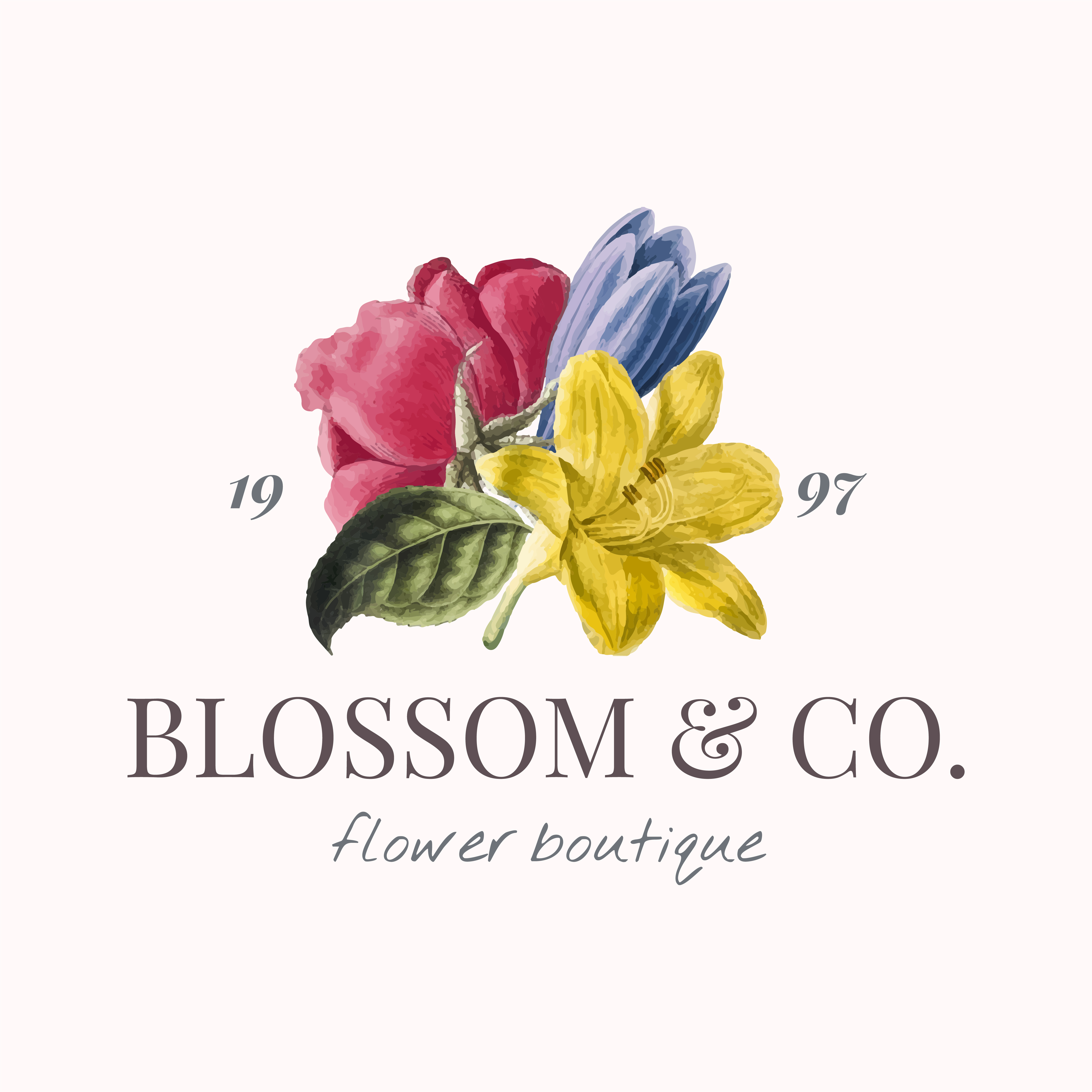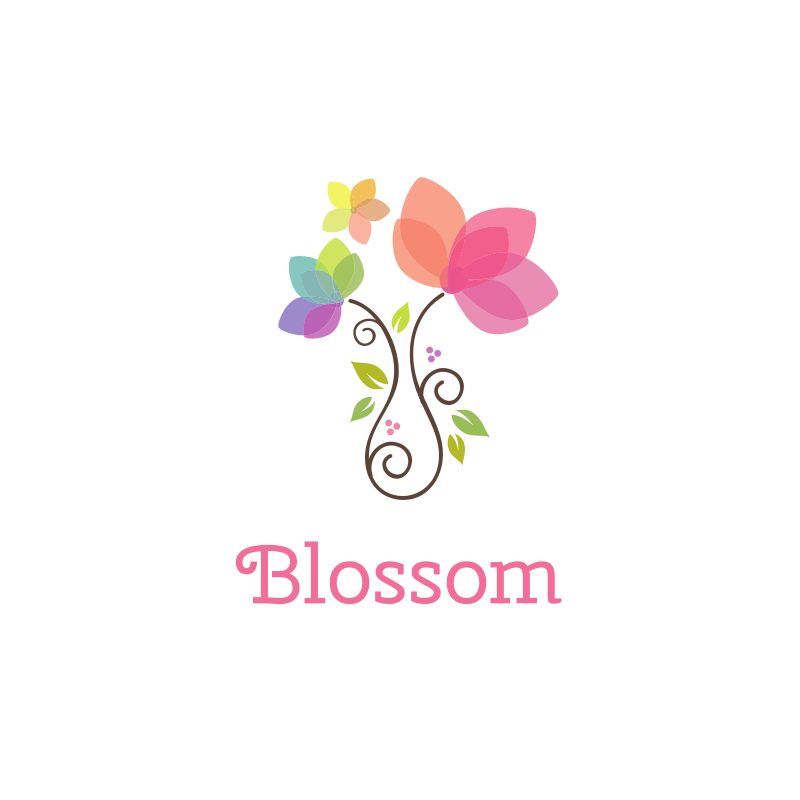Flower logo brand has become a powerful symbol in the world of branding and marketing. These logos, often incorporating floral elements, convey elegance, beauty, and growth. They are widely used across various industries, from fashion to hospitality, and have proven to be effective in creating a lasting impression on consumers. In this article, we will delve into the significance of flower logo brands and explore why they continue to thrive in today's competitive market.
Designing a flower logo is more than just adding petals and leaves to a brand identity. It involves a deep understanding of the brand's values, target audience, and market positioning. A well-crafted flower logo can evoke emotions, communicate brand messages, and differentiate a company from its competitors. This article aims to provide a detailed analysis of flower logo brands, including their history, design principles, and impact on consumer perception.
As we explore the world of flower logo brands, we will examine how these logos have evolved over time and the reasons behind their enduring popularity. By the end of this article, you will gain valuable insights into the art of creating a successful flower logo and how it can elevate your brand's presence in the market.
Read also:Mike Lindell Net Worth Today The Untold Story Of A Business Mogul
Table of Contents
- History of Flower Logo Brand
- Design Principles for Flower Logos
- Popular Flower Logo Brands
- Psychology Behind Flower Logos
- Impact on Different Industries
- Current Trends in Flower Logo Design
- Creation Process of a Flower Logo
- Tools and Software for Designing Flower Logos
- Marketing Strategies with Flower Logos
- Future of Flower Logo Brands
History of Flower Logo Brand
The use of flowers in branding dates back centuries, with ancient civilizations incorporating floral motifs into their art and symbols. Over time, these designs evolved into modern-day logos, representing various brands across industries. Flower logos have become a staple in branding due to their timeless appeal and versatility. They can be adapted to suit different styles, from minimalist to intricate, depending on the brand's identity.
Evolution of Flower Logos
Flower logos have undergone significant transformations over the years. Early designs focused on detailed, realistic representations of flowers, while contemporary logos often feature simplified, abstract forms. This evolution reflects changes in design trends and consumer preferences, as well as advancements in technology that allow for more creative freedom in logo creation.
Design Principles for Flower Logos
Creating an effective flower logo requires adherence to certain design principles. These principles ensure that the logo is visually appealing, memorable, and aligned with the brand's values. Below are some key considerations when designing a flower logo:
- Color selection: Choose colors that evoke the desired emotions and align with the brand's identity.
- Simplicity: Avoid overly complex designs that may confuse or overwhelm the audience.
- Scalability: Ensure the logo looks good in various sizes and formats, from business cards to billboards.
Importance of Symbolism
Flowers carry deep symbolic meanings, and incorporating these into a logo can enhance its impact. For instance, roses represent love and passion, while lilies symbolize purity and elegance. Understanding the symbolism behind different flowers can help designers create logos that resonate with their target audience.
Popular Flower Logo Brands
Several well-known brands have successfully incorporated flower logos into their branding strategies. These logos have played a crucial role in establishing their identity and building strong brand recognition. Below are a few examples of popular flower logo brands:
- Lancôme: Known for its iconic rose logo, Lancôme represents luxury and sophistication in the beauty industry.
- Lotus: This automotive brand uses a stylized flower logo to convey speed and precision.
- Blossom: A fashion brand that utilizes a floral logo to appeal to its target audience of young, stylish women.
Case Study: Lancôme's Rose Logo
Lancôme's rose logo is a testament to the power of flower logos in branding. The logo's elegant design and association with the brand's French heritage have contributed to its success. By maintaining consistency in its use across marketing materials, Lancôme has reinforced its brand identity and strengthened consumer loyalty.
Read also:Tony Ab Camping Net Worth A Comprehensive Guide To His Wealth And Success
Psychology Behind Flower Logos
Flower logos evoke positive emotions and associations, making them an effective tool in branding. Research has shown that people are naturally drawn to floral imagery due to its connection to nature and beauty. This emotional response can influence purchasing decisions and enhance brand perception.
Emotional Impact of Flowers
Flowers are often associated with joy, celebration, and romance. Brands that incorporate flower logos can leverage these emotions to create a positive association with their products or services. For example, a flower logo used by a wedding planner can evoke feelings of love and happiness, making it more appealing to potential clients.
Impact on Different Industries
Flower logos have proven to be versatile and effective across various industries. From fashion and beauty to automotive and technology, these logos have successfully enhanced brand identity and attracted target audiences. Below are some industries where flower logos have made a significant impact:
- Fashion: Floral logos are commonly used in fashion brands to convey elegance and style.
- Beauty: Flower logos in the beauty industry evoke feelings of natural beauty and purity.
- Automotive: Some automotive brands use flower logos to symbolize speed, precision, and innovation.
Adaptability Across Industries
The adaptability of flower logos allows them to thrive in diverse industries. By tailoring the design to fit the specific needs and values of each industry, brands can create logos that resonate with their target audience and stand out in the market.
Current Trends in Flower Logo Design
The world of logo design is constantly evolving, and flower logos are no exception. Current trends in flower logo design include minimalism, geometric shapes, and vibrant color palettes. These trends reflect changes in consumer preferences and advancements in technology that enable designers to experiment with new techniques and styles.
Minimalist Flower Logos
Minimalist flower logos have gained popularity due to their simplicity and versatility. These designs often feature clean lines and limited colors, making them easy to recognize and remember. Minimalist flower logos are particularly effective for brands that want to convey a modern, sophisticated image.
Creation Process of a Flower Logo
Designing a flower logo involves several steps, from concept development to final execution. Below is a breakdown of the creation process:
- Research: Understand the brand's values, target audience, and market positioning.
- Sketching: Create initial sketches of the logo design, experimenting with different floral elements.
- Refinement: Refine the design, focusing on details such as color, shape, and proportion.
- Feedback: Gather feedback from stakeholders and make necessary adjustments.
- Finalization: Finalize the design and prepare it for use across various platforms.
Key Considerations
When creating a flower logo, designers must consider factors such as scalability, versatility, and cultural relevance. A well-designed flower logo should be adaptable to different formats and resonate with the brand's target audience.
Tools and Software for Designing Flower Logos
Various tools and software are available to assist designers in creating flower logos. Some popular options include Adobe Illustrator, CorelDRAW, and Canva. These tools offer a range of features, from advanced vector editing to user-friendly templates, making it easier for designers to bring their creative visions to life.
Choosing the Right Tool
Selecting the right tool for designing a flower logo depends on the designer's skill level and project requirements. Beginners may find Canva's intuitive interface and pre-designed templates helpful, while experienced designers may prefer the advanced features of Adobe Illustrator or CorelDRAW.
Marketing Strategies with Flower Logos
Flower logos can be a powerful marketing tool when used strategically. Brands can incorporate these logos into various marketing materials, such as social media posts, advertisements, and packaging, to enhance brand recognition and attract target audiences. Below are some effective marketing strategies for flower logos:
- Consistency: Use the logo consistently across all marketing channels to reinforce brand identity.
- Storytelling: Use the logo to tell a story about the brand, highlighting its values and mission.
- Engagement: Encourage audience engagement by featuring the logo in interactive content, such as contests or quizzes.
Enhancing Brand Presence
By incorporating flower logos into their marketing strategies, brands can enhance their presence in the market and build stronger connections with their audience. A well-executed marketing campaign featuring a flower logo can increase brand awareness, drive sales, and foster customer loyalty.
Future of Flower Logo Brands
The future of flower logo brands looks promising, with advancements in technology and design trends opening up new possibilities for creativity and innovation. As consumer preferences continue to evolve, flower logos will adapt to meet the changing demands of the market, ensuring their relevance and effectiveness in branding.
Innovations in Flower Logo Design
Emerging technologies, such as augmented reality and 3D printing, are set to revolutionize the way flower logos are designed and used. These innovations will allow brands to create more immersive and interactive experiences for their audience, further enhancing the impact of flower logos in branding.
Conclusion
Flower logo brands have proven to be a powerful tool in the world of branding and marketing. By understanding the history, design principles, and impact of flower logos, brands can create effective logos that resonate with their target audience and elevate their market presence. We encourage you to share your thoughts and experiences with flower logos in the comments section below and explore other articles on our site for more insights into branding and design.

